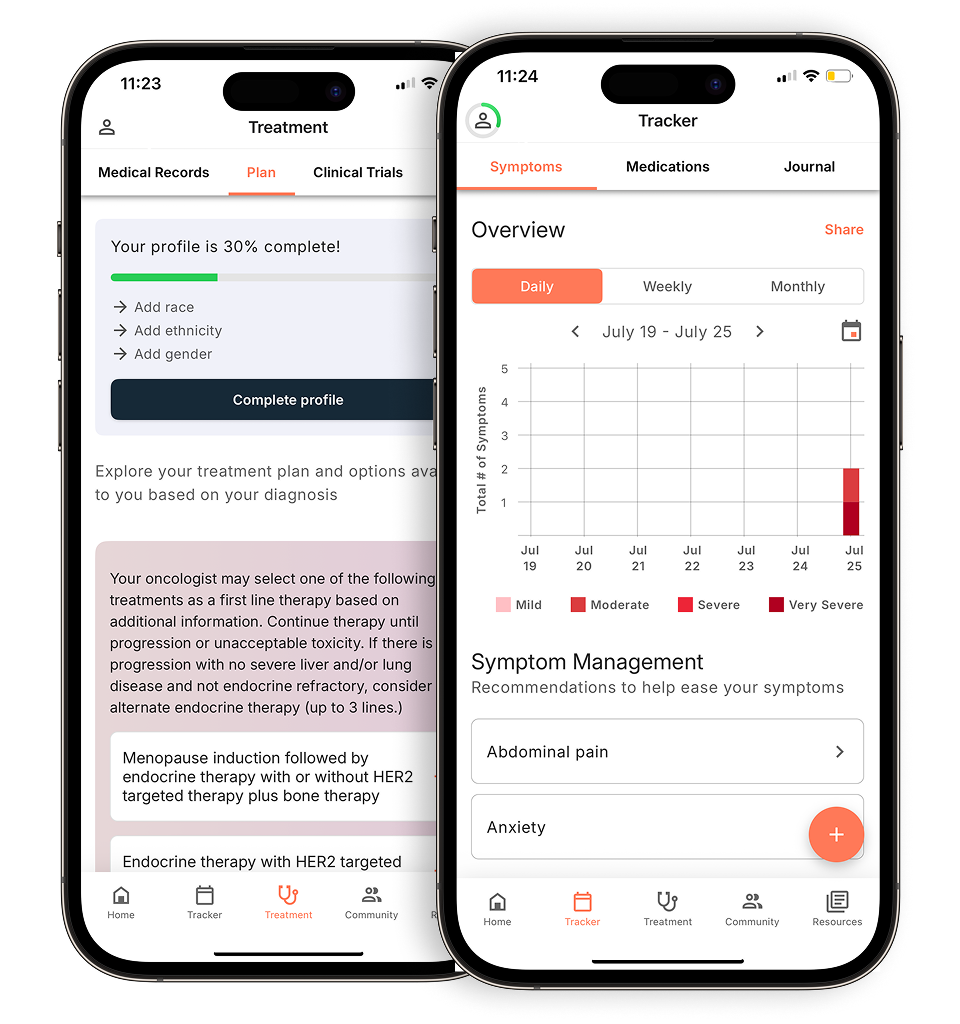September 15th marks the first day of Hispanic Heritage Month and while we celebrate the histories and cultures of Hispanic Americans and Latinas, it’s also important to consider how the burden of breast cancer disproportionately affects these communities. Continue reading to learn 5 key facts about breast cancer disparities in Hispanic women and Latinas, and discover resources available to these patients across the U.S.
- Hispanic women and Latinas are less likely to be screened for breast cancer.
Preventative care and breast cancer screening rates are low among Hispanic women and Latinas, with only about 60% of these women over the age of 45 receiving regular mammograms. These low screening rates contribute to the fact that breast cancer in Hispanic women is often diagnosed at later stages when it is more difficult to treat. Research shows that just 59% of breast cancers in Hispanic women are caught when the cancer is confined to the breast, compared to 67% for white women. Many experts believe that access to healthcare and immigration status play a role in these low screening numbers.
- Hispanic women and Latinas are more likely to be diagnosed at a younger age with more aggressive forms of breast cancer.
Studies have consistently shown that Hispanic women and Latinas are not only diagnosed at younger ages on average, but also with more aggressive forms of breast cancer such as triple-negative breast cancer (TNBC). Factors such as limited access to quality healthcare, socioeconomic disparities, and genetic predispositions may contribute to this higher incidence of aggressive breast cancers among these women.
- Though Latina women are less likely to get breast cancer, they have higher rates of mortality from the disease.
Hispanic women and Latinas have approximately a 30% lower incidence rate of breast cancer than non-Hispanic white women, but they face disproportionate mortality rates. Between 1990 – 2016, the breast cancer mortality rate in Hispanic women decreased by only 29%, compared to a 39% decrease in white women. The heartbreaking reality is that, while Hispanic women are less likely to get breast cancer, they are nearly 20% more likely to die from it.
- There is significant underrepresentation of Hispanic women and Latinas in clinical research.
Although Hispanic people represent 13% of people with cancer, they make up only 3–6% of participants in clinical trials. This means that these patients do not have access to the latest treatment innovation happening in research studies, and the treatments being researched are not being evaluated based on a representative patient population. Language barriers, financial burdens, inadequate healthcare coverage, or lack of knowledge about clinical trials are cited as contributing factors to this disparity.
- Despite the prevalence of genetic mutations, there are lower rates of genetic testing among Latinas.
Though more research is needed, some studies have suggested that there is a higher prevalence of BRCA1 and BRCA2 genes among women of Latin descent. Despite this, only 30% of Hispanic women with breast cancer that meet the criteria to receive genetic testing go without it. Genetic testing can help inform personalized treatment options for patients and the preventative practices for their family members.
Addressing these disparities
Access to health insurance and culturally sensitive care, plus increased education on early detection services, clinical trials, and genetic testing could help improve outcomes. Here are some organizations around the U.S. making a difference in reducing the burden of breast cancer on these communities:
- Austin, TX: Breast Cancer Resource Center
- Chicago, IL: Latina Association for Breast Cancer (ALAS-WINGS)
- Long Island, NY: Latinas Sisters Support
- Santa Clara, CA: Latinas Contra Cancer
- Washington, D.C.: Nueva Vida
Personalized support for real care decisions
Understand your diagnosis, explore clinical trials, and track symptoms--all in one place.
Get started
Compare treatments, prepare for appointments, and track side effects—all in the app
Built for your diagnosis, Outcomes4Me gives you the tools to make confident, informed decisions—right when you need them.
Continue in app






